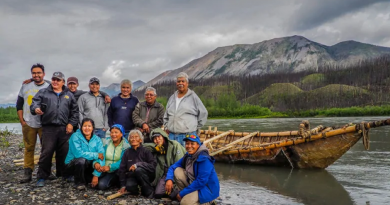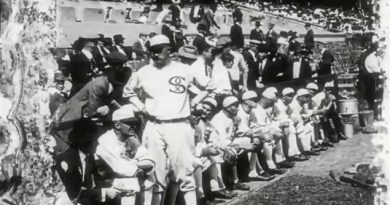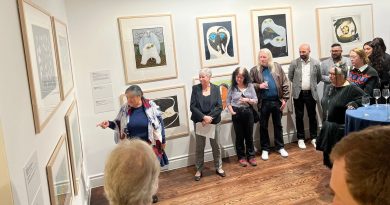Traditional moosehide tanning skills passed on in Whitehorse workshop
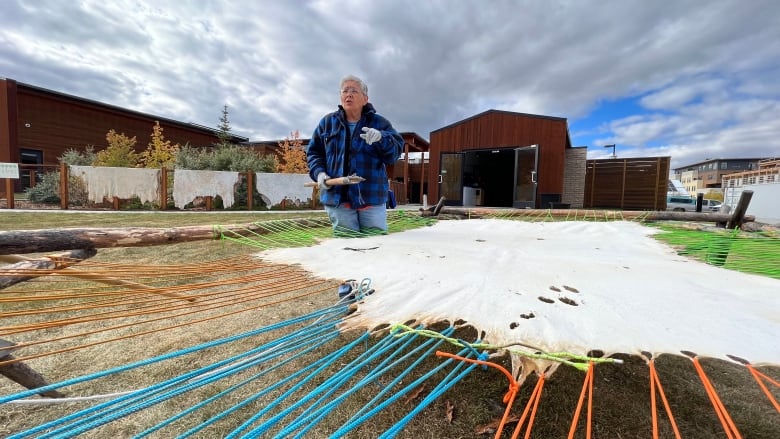
Moosehide tanning is one of the fundamental practices of Yukon Indigenous people. They’ve been doing it for thousands of years, and passing the skills down from generation to generation.
It’s an important tradition to maintain the culture, but only a few know how to do it.
That’s why Margaret Douville, originally from Teslin, Yukon, wants to share the knowledge with others.
“I always like to pass my knowledge on ’cause I’m not gonna be here forever,” she said.
Douville learned this traditional practice from her grandparents when she was 13 years old.
She recalls the moment her grandfather called her Tlingit name, Watsi, meaning little doll, from across her family home and asked her to sit down and watch.
“I thought I was in trouble,” she said.
Douville said the best way to learn is by watching and doing.
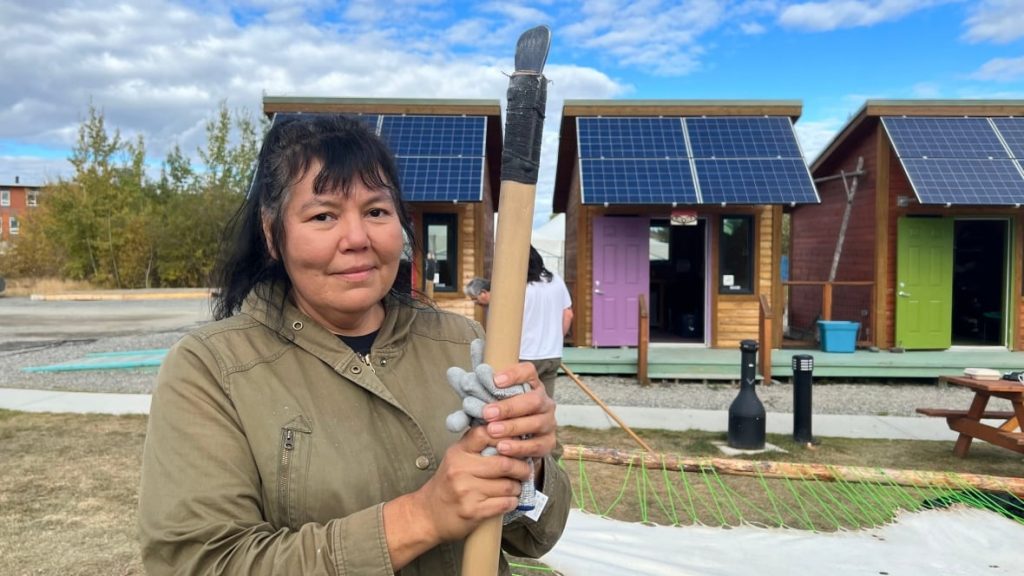
“It’s not like a book reading, because who’s gonna read a book and then run back and forth? You cut this much off and then you go run back. By the time you finish reading that book, your moosehide is gonna dry up,” she said.
Many years later, she is now teaching others how to do it — a role her elders had hoped for her.
“I was thinking about my grandfather, he said, ‘Maybe one day you are going to be a big shot.’ What he was trying to tell me is ‘You’re going to be the next teacher.’ And it really hit me,” said Douville.
Douville said her first moosehide tanning took her 17 days and it looked like a fish net from all the holes she had cut into the hide. Her grandparents welcomed it as a learning opportunity.
“Gunałchéesh [thank you] grandpa, grandma and all my ancestors for teaching me. For teaching me and for passing on your knowledge to me.”
Douville, also known as Moosehide Margaret, has been teaching and learning the traditional practice in multiple Indigenous communities across the North.
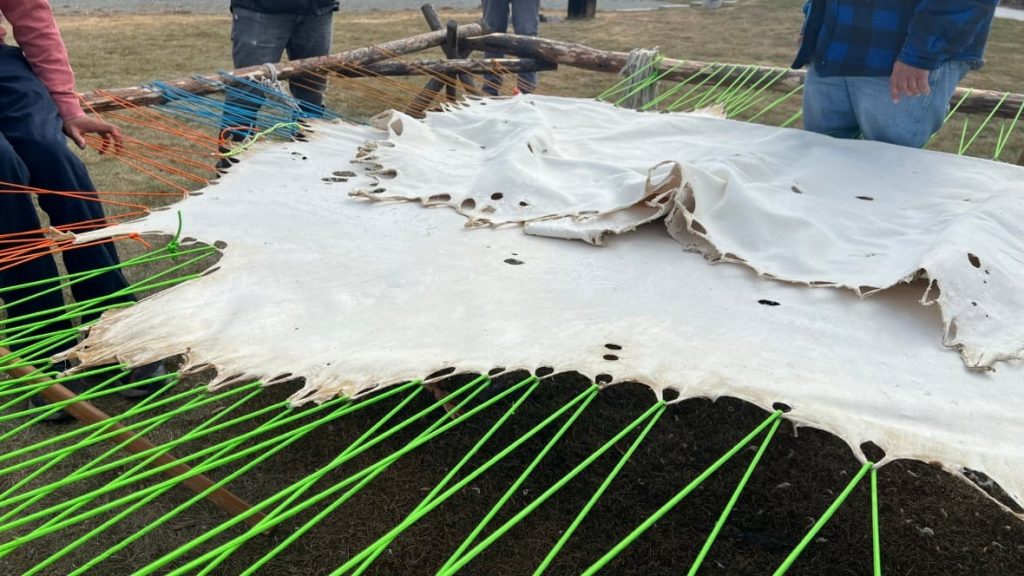
Last week, she hosted a week-long moosehide tanning workshop at the Kwanlin Dün Cultural Centre (KDCC).
Cynthia Asp, who is Northern and Southern Tutchone, said participating in this workshop was a dream come true.
“When am I going to get a week to participate in ancient culture? Our people have done this from time immemorial. And to learn from a master like Margaret, is an honour. It’s incredible,” she said.
Asp said that moosehide tanning should be mandatory cultural training for people who want to come into the territory.
“You want to work in our government? Come and do some moosehide tanning. Come and learn. Come and be a part of the culture,” she said.
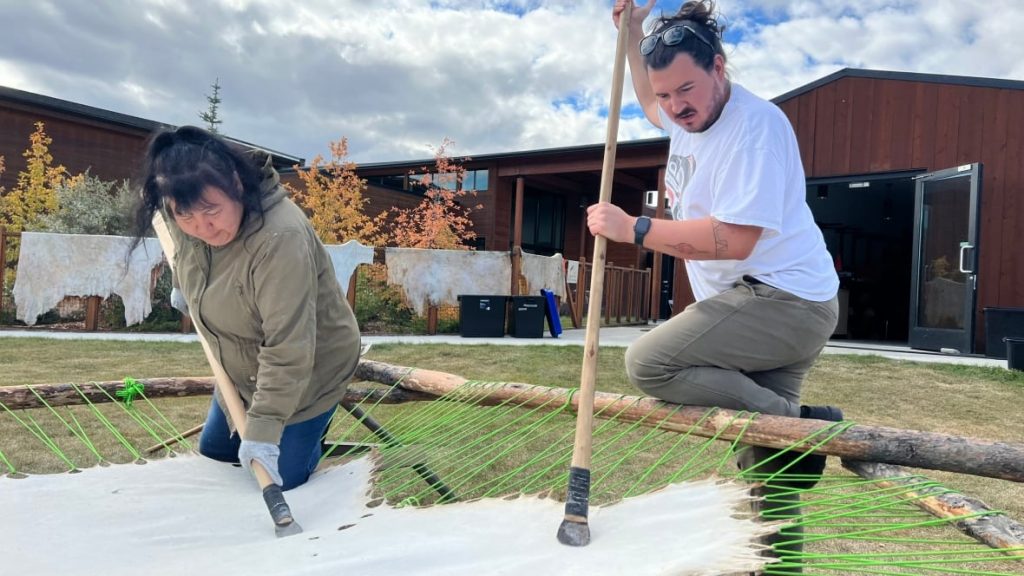
Kailen Gingell, the cultural program manager at the KDCC, said the centre wants to offer more cultural programming that is available for people walking around the building, including tourists.
“A lot of people are really interested in knowing how it’s done and why this work is so important,” he said.
Gingell also participated in the week-long workshop, a rewarding experience she said.
“You really feel your cultural knowledge grow and it’s healing as well.”
“This is something that I haven’t done growing up, but it’s something that is important going forward to reconnect to yourself, culturally, and learn this skill that’s been so important to the people of the Yukon and your own people for thousands of years,” he said.
Gingell said the centre will try to introduce another moosehide tanning workshop next spring.
Related stories from around the North:
Canada: Indigenous population hits 1.8M, growing at twice rate of non-Indigenous Canadians, CBC News
Finland: 70th annual reindeer cup races held on frozen Lake Inari, The Independent Barents Observer
Russia: German project to house everything published in Siberian and Arctic languages to seek new funding, Eye on the Arctic
Sweden: Award-winning novel set in Sapmi to get Netflix treatment, Eye on the Arctic

